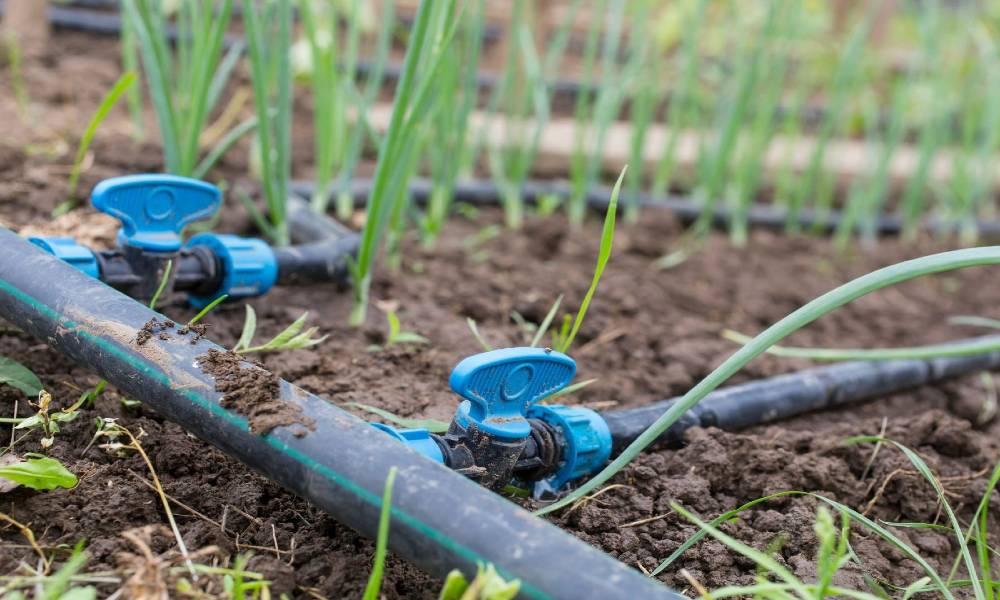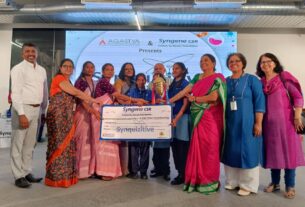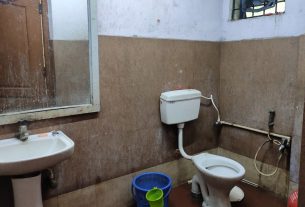Pradhan Mantri Krishi Sinchayee Yojana (PMKSY) for promoting drip irrigation has had a 50 percent success rate in Bengaluru urban and rural in the last eight years.
Benefits of the Drip irrigation system (DIS) , under the Pradhan Mantri Krishi Sinchayee Yojana (PMKSY) scheme have reached only half the farmers in Bengaluru urban and rural regions.
Under the DIS, Karnataka government gives 90 percent of the amount to all categories of farmers for installing the irrigation setup, and 100 percent support for the Schedule Castes and Schedule Tribes.
| Financial Year | Bengaluru (Urban) in thousand hectares | DIS installed in thousand hectares | Subsidy received by farmers (as per Dept. of Irrigation), in percentages | Bengaluru (Rural) in thousand hectares | DIS installed in thousand hectares | Subsidy received by farmers (as per dept. of Irrigation), in percentages |
| 2020-21 | 53.27 | 3.93 | 47.51 | 899.11 | 507.62 | 33.73 |
| 2021-22 | 55.98 | 10.69 | 43.79 | 901.62 | 553.32 | 37.93 |
| 2022-23 | 59.21 | 13.48 | 46.80 | 907.35 | 560.71 | 38.54 |
Suresh, a farmer from Gollahalli said that he spent Rs. 90,000 to install DIS in two acres. After the government compensation of 90 percent, he had to spend Rs. 9000. “Additional costs for the complete set-up, training, maintenance and miscellaneous cost was more than Rs. 15,000 to 20,000, which I had to give from my pocket,” he said.
Pradhan Mantri Krishi Sinchai Yojana (PMKSY) is a national mission to improve farm productivity and ensure better utilization of the resources in the country. The farmers with less than 50 acres of land are not enrolled under PMKSY, even though they are entitled for installation of DIS.
Bengaluru urban has 53.27 thousand hectares of agricultural lands, while 899.11 thousand hectares of land are in rural category.
For the Financial Year 2020-21, around 34 percent farmers installed DIS, but only 23 percent of them received the subsidy. In 2021-22 there was growth of 9 percent in DIS instalment. In 2022-23 there was fall of 2 percent from the growth percentage of previous year. Only 19 percent of the farmers benefitted from the subsidy in 2023.

On an average every year Bangalore’s rural and urban farms see a six percent growth in installing DIS, a little more than Tumkur and Chamrajanagar but much less than the remaining districts of the state.
In FY 2022-23, Bidar, Raichur, Chitradurga and Davangere the DIS rate stood at 89 percent, 95 percent, 91 percent and 97 percent respectively. These districts accomplished PMKSY goal with an average of 17 percent per year since the scheme was launched in 2015.
| Districts which have highest number of DIS installed | DIS installed (in percentages) | DIS installed in hectares of land |
| Bidar | 89 | 1273.93 |
| Raichur | 95 | 2890.72 |
| Chitradurga | 91 | 5947.36 |
| Davangere | 97 | 3018.85 |
A horticulture officer added that since last five years, Bengaluru Rural has seen depletion of underground water level and hence that is the reason farmers are not opting for DIS.
Drip irrigation is sometimes called trickle irrigation and involves dripping water onto the soil at very low rates (2-20 litres/hour) from a system of small diameter plastic pipes fitted with outlets called emitters or drippers.
In DIS, a sensor chip is installed in the soil at 1-2 centimeters below the soil. The sensor will send the signal to the motor and the water is released to the crops either from the water storage tank or underground submersible pump.
Prof. Koppal from R.V. College of engineering said, “DIS is a revolutionary technology and Israel uses DIS technology very efficiently. By this technology farmers don’t have to worry about watering their farm. The farmer only needs to have basic training on how to operate it according to the crop that he sows.”
Mallikarjuna Swamy from University of Agriculture Sciences, Bengaluru said, “DIS has many advantages. It prevents diseases by minimizing water contact with the leaves, stems, and fruit of plants. It allows the rows between plants to remain dry, improving access and reducing weed growth. It saves time, money, and water because the system is so efficient. It decreases labour, increases effectiveness on uneven ground and reduces leaching of water and nutrients below the root zone.
Swamy added that if farmers are not opting for DIS, the most expected reason would be installation costs and the subsidy of amount that they receive.
The horticulture officer agreed that subsidy is the biggest issue, and farmers have to wait for assent from the farm evaluation and assessment department. The approval of installing DIS in farm only gets sanctioned if the department concerned audits the land and financial condition of the farmer. After sanctioning, the farmer can install the DIS.
One known DIS dealer of the city who thinks the whole scheme is a farce, said, “Only farmers who have large swathes of land like 150 or above 200 acres consider DIS. Even dealers are forced to make manipulative invoices where the differences of the amount go to the officials. As far as subsidy is concerned it’s a hoax. Farmers have to bear the entire amount and sometimes out of their pocket which is an unhealthy investment and it is better to rely on existing system of irrigation.”
Differences in the sums released and received are also visible in the data of Ministry of Jal Shakti and Karnataka Drip irrigation department, published by the Press Information Bureau (PIB).
The PIB data shows Rs.996.54 crore released to Karnataka, whereas Karnataka government claims that only Rs. 665.73 crore have been credited to the department of irrigation for DIS under PMKSY.
| Financial Year | Sanctioned amount from Government of India | Amount received by Government of Karnataka |
| 2020-21 | 996.54 | 665.73 |
| 2021-22 | 1013.73 | 775.48 |
| 2022-23 | 1091.24 | 979.54 |
An officer in Horticulture department said, “It is true that Rs. 996.54 crore is sanctioned. The exact amount is also reflecting in our balance sheet too. It is not in Karnataka government account, since they haven’t released it yet.”
The Horticulture officer said that the subsidy is credited through Direct Benefit Transfer (DBT) system after six months of sanction. The department of horticulture sanctions amount after the assessment of DIS. Drip irrigation personnels then make estimation for the total sanction amount that need to be released.
PMKSY is centrally sponsored scheme where the central and state government shares are 60:40.




